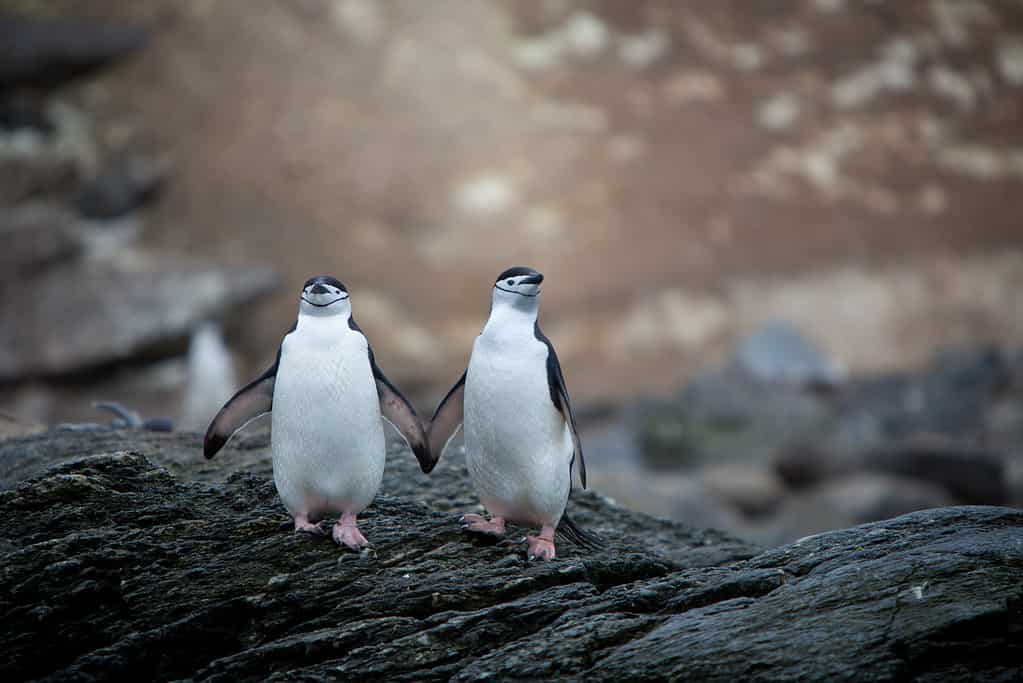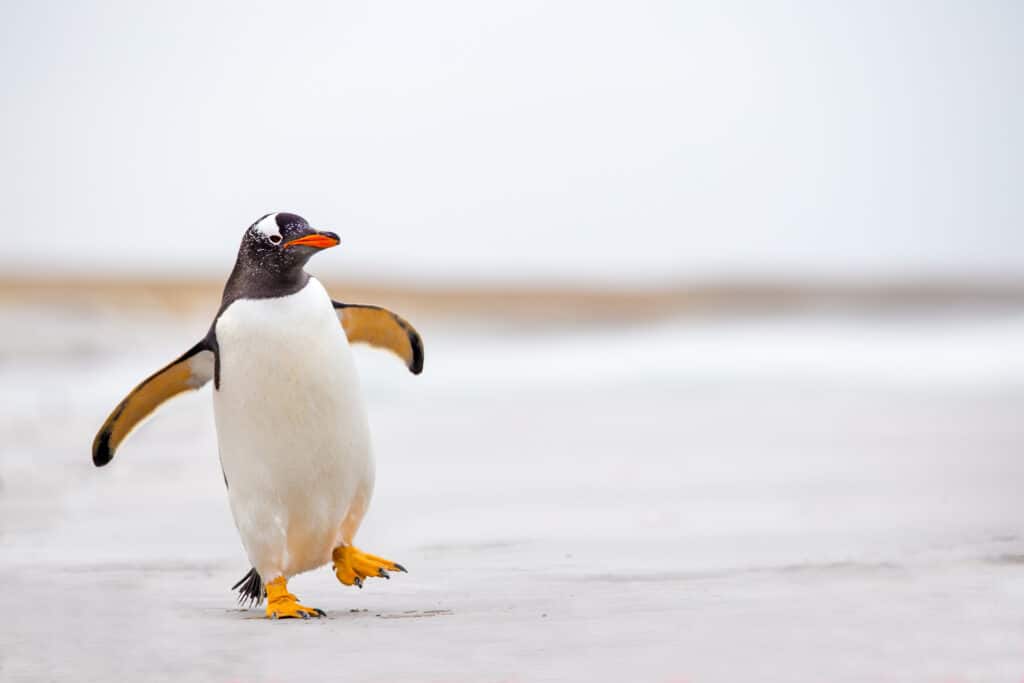Let’s be honest, penguins are some of the most beloved creatures on the face of planet Earth. These seabirds have captured the hearts of countless people, and it’s easy to see why. Their adorable waddle, loving personalities, and round bodies have helped endear them to many. However, the truth is that they may be in danger of disappearing forever. With environmental conditions changing at such a rapid rate, some species of penguins have found themselves displaced throughout the years. Let’s explore what the conservation status of penguins is currently like and explore whether or not these animals are endangered.
Penguins: A Brief Overview

Penguins belong to the family
Spheniscidae.
©Chris Venne/Shutterstock.com
There are roughly 18 species of penguins across the globe, and a majority of them reside in Antarctica. These birds are unable to fly, however, what they lack in this department they more than make up for when it comes to swimming. Penguins spend the majority of their life in the water, which makes them adept aquatic hunters. These birds have the ability to catch the targets they aim for more often than not. According to the World Population Review, there are currently over 40,000,000 penguins alive today throughout the world. With a large number like this, you might think that penguins aren’t in danger of vanishing at all. However, certain species have numbers in the low thousands, and one in particular has as little as a few hundred members of their species alive today.
What Is the Conservation Status of Penguins?

Generally speaking, many penguin species live to be between 15 and 20 years old.
©Michel VIARD/ via Getty Images
Although many people across the globe are familiar with seeing penguins in zoos and aquariums, the sad reality is that they have become increasingly scarce in the wild. While not every species of penguin is endangered, quite a few are, such as the African penguin, the Galápagos penguin, and the crested penguin. According to BirdLife, “Penguins are sadly one of the most threatened groups of seabirds, with half of the 18 species listed by Birdlife as either Vulnerable or Endangered.” Their decreasing numbers are attributed to factors such as climate change, loss of habitat, and increasingly scarce food sources. Currently, only a handful of penguins have stable populations. Magellanic penguins, king penguins, Adelie penguins, gentoo penguins, and chinstrap penguins are all species of least concern.
How Can We Help Penguins Recover?

While many people believe penguins to be monogamous, recent studies have shown that they may have several partners throughout their lives.
©iStock.com/fieldwork
For those interested, there are a variety of opportunities to help penguin populations. For example, there are several causes dedicated to the preservation of penguins’ natural habitat, such as the Global Penguin Society, The World Sustainability Foundation, and the Galápagos Conservancy. Donating to these foundations helps fund the individuals who fight for these animals each day. However, there are ways to get involved outside of donating as well. Protesting activities that exasperate climate change, raising awareness on social media, and limiting your own carbon footprint are all incredibly helpful.
Certain individuals may feel called to join this cause themselves and pursue a career in environmental conservation. This is a noble cause, and the Earth needs impassioned individuals on the frontlines now more than ever. In essence, although some penguin species are in serious danger of going extinct, the outlook remains hopeful for their recovery. Conservationists are working tirelessly to preserve their natural environment and breed them in captivity. These activities are making a difference in penguin populations, and we may someday see these endangered species recover.
The photo featured at the top of this post is © iStock.com/jmmf
Thank you for reading! Have some feedback for us? Contact the AZ Animals editorial team.






